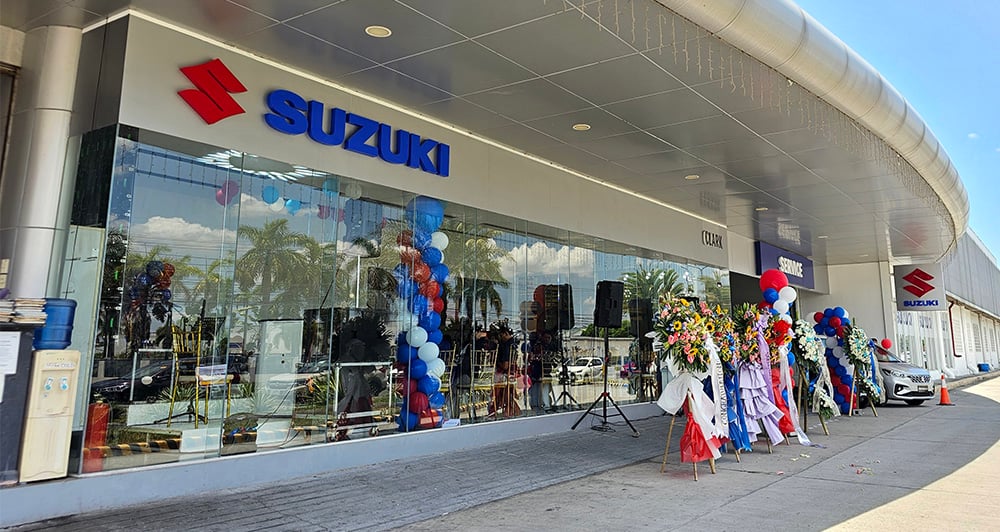
Admittedly, it’s not the ideal anglicized version of Bin Yue, the car’s name in the Chinese domestic market. But Engrish monikers aside, our brief experience behind the wheel of the Geely Coolray is enough to brush off the usual stereotypes associated with vehicles built in the People’s Republic.
You see, Geely’s previous importer never really made a lasting impression on our market. When was the last time you saw an LC supermini on the road? But the brand’s new Philippine partner, Sojitz G Auto Philippines, believes that the company has achieved a phoenix-like rebirth from the ashes of its former, mediocre self. So much so that it invited us to China so that we could see for ourselves the new and refreshed Geely.




At the Ningbo International Speedway, we first laid eyes on the car that is set to spearhead Geely’s reentry into the Philippines. First impressions? This thing looks good! Like really, really good. It has handsomely chiseled front fenders that make it look wider than it really is. The hood has a subtle power bulge. Red brake calipers peek through the 18-inch, two-tone alloy wheels. The rear-quarter windows sweep up and terminate toward a tailgate spoiler. All in all, the Coolray has a youthful vibe that should make it stand out against its more mature competition (except maybe for the Kia Seltos).


The design ingenuity continues inside with the black headliner matched with burgundy, soft-touch materials and brushed-aluminum surfaces. There are plenty of elements to suggest that Volvo had a big hand in making the interior an inviting place to be in. The buttons, the self-centering gear selector and the air-conditioning vents look fancy and functional at the same time. As with any Chinese car, rear-seat legroom is generous with deep footwells and without a center floor hump. The Coolray may have subcompact dimensions—4,330mm long, 1,800mm wide and 1,609mm tall—but the cabin doesn’t feel cramped at all.




Then again, any Chinese carmaker can claim that its products have European-inspired interiors or American-made parts. However, Geely isn’t banking on merely saying this just to give a vague semblance of superior quality and performance. To that end, it created a short handling course for us to test the Coolray against its Asian and European rivals: the Honda HR-V, the Hyundai Kona, the Ford EcoSport and, believe it or not, the BMW X1.



To be honest, we weren’t looking to find out which one handled the best. The BMW won that, hands down. We simply wanted to know if the Coolray’s cornering skills benefited from the research-and-development efforts poured into it by its manufacturer. In other words, would we be confident enough to perform emergency maneuvers at speed in this car?


The course consisted of a sweeping right-hander followed by a low-speed chicane and an emergency lane change. Carrying some speed into the first corner, all cars exhibited mild understeer. The Coolray handled it just as well as the others, if not as fast as the X1. The loss of front-end grip was progressive, and a simple lift of the accelerator had the car turning tighter. The car negotiated the chicane and emergency lane change as well, with body roll being acceptable and noticeably less than in the top-heavy EcoSport.
We tested the Coolray against its Asian and European rivals: Honda HR-V, Hyundai Kona, Ford EcoSport and, believe it or not, BMW X1
The Coolray’s drivetrain is also worth mentioning. Under the hood is a turbocharged 1.5-liter gasoline engine with only three cylinders. Despite the lack of a fourth piston, output and torque max out at 175hp and 255Nm, respectively. Torque delivery is linear as nothing is put to waste when the turbo comes on boost, thanks to the seven-speed dual-clutch transmission. And speaking of the transmission, it uses wet clutches—said to be the better design for driving in stop-and-go traffic.



Including the feature-packed suite of electronic driver aids that include park assist and a 360° camera system, the Coolray is one hard-to-beat package of toys and technologies. And thankfully, it is: It is entering a market of haters who bash anything with the word “Chinese” attached to it.
But just like our own discovery of the new Geely in its home country, potential customers should come and experience the brand for themselves, too. We promise that it’ll be worth their time and may even change their perception that the Coolray is just another second-rate car from China.











Comments